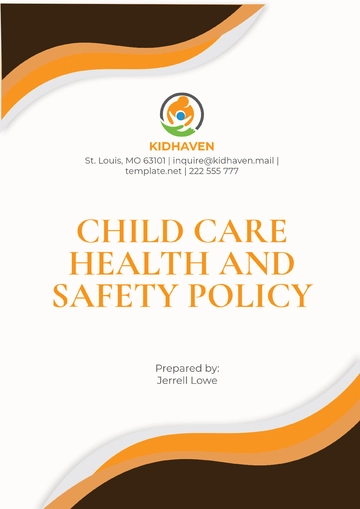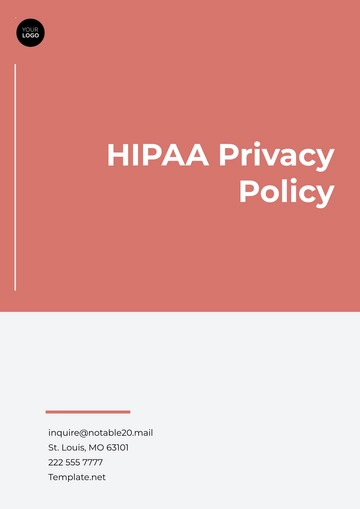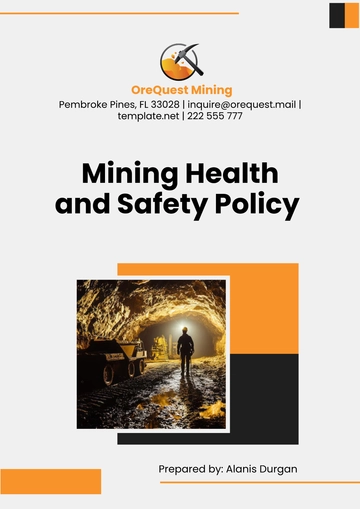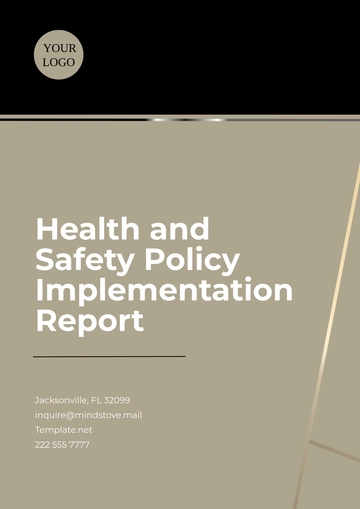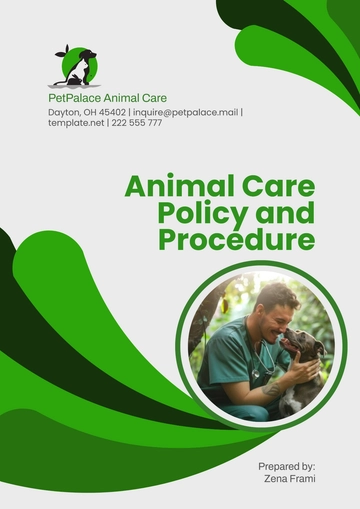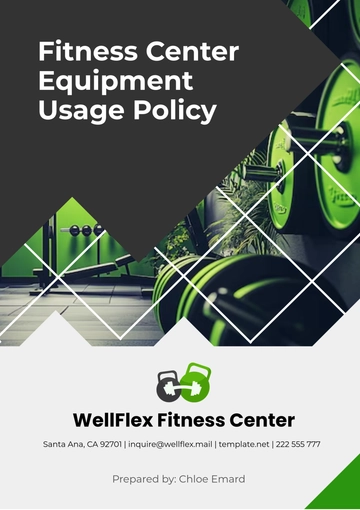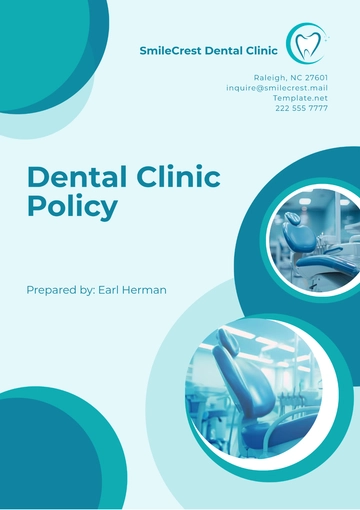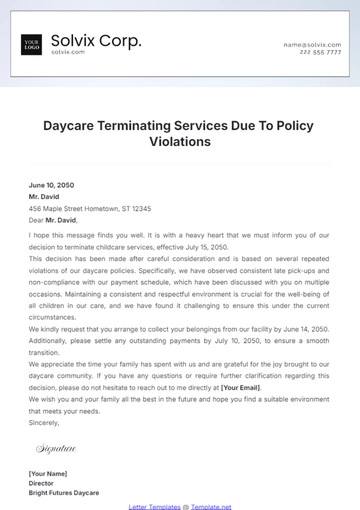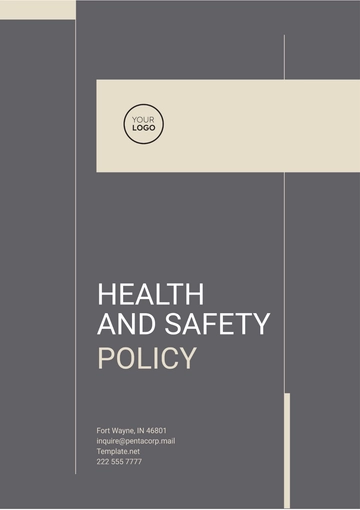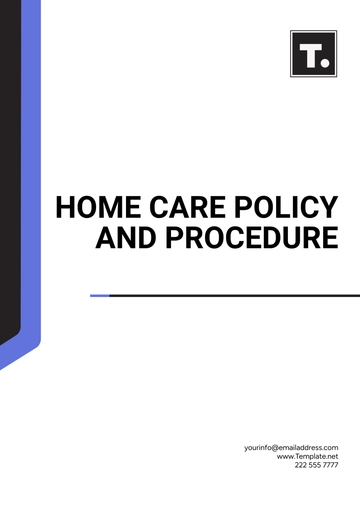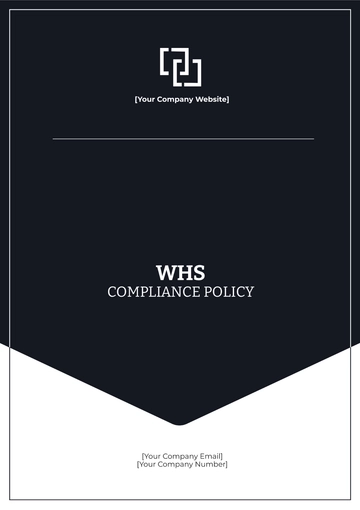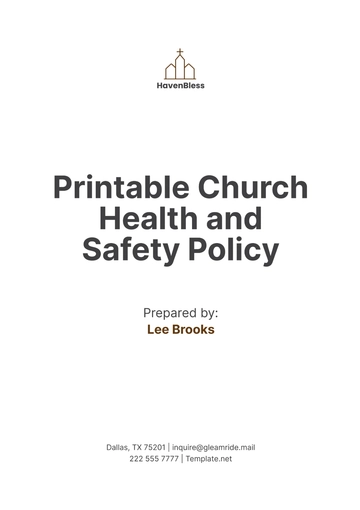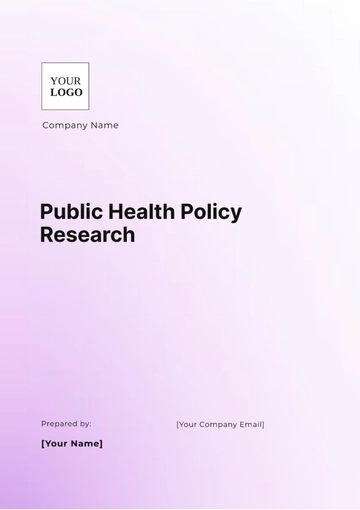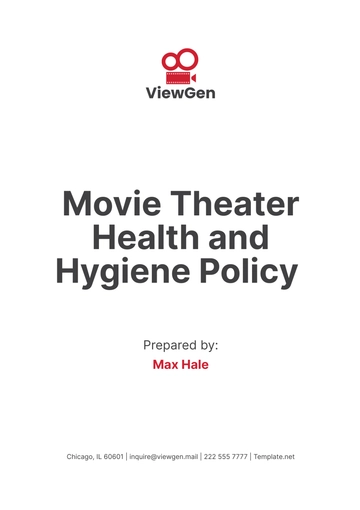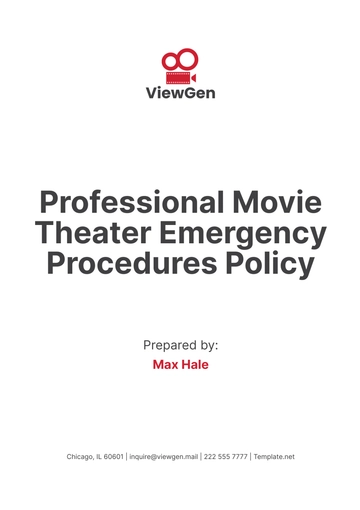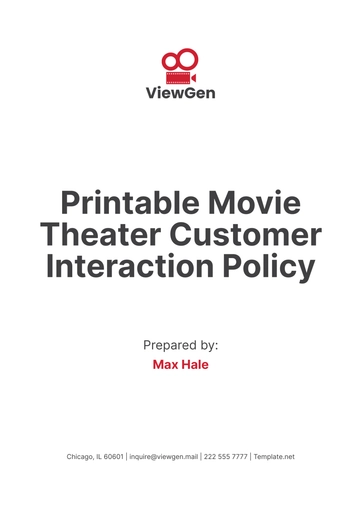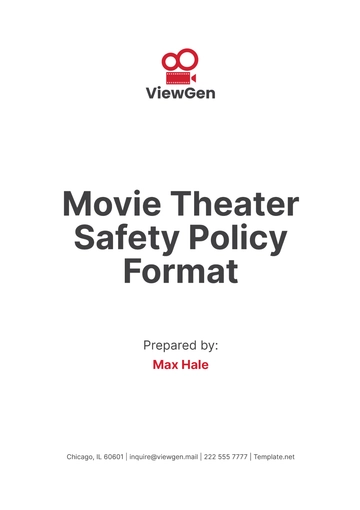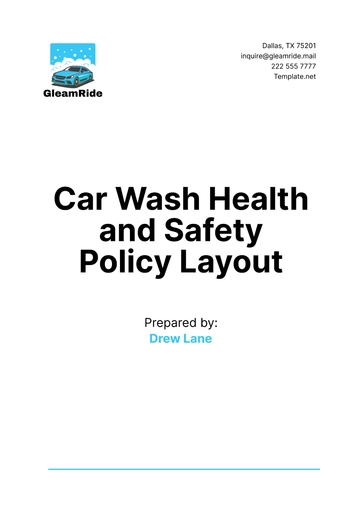Free Nursing Home Infection Control Policy
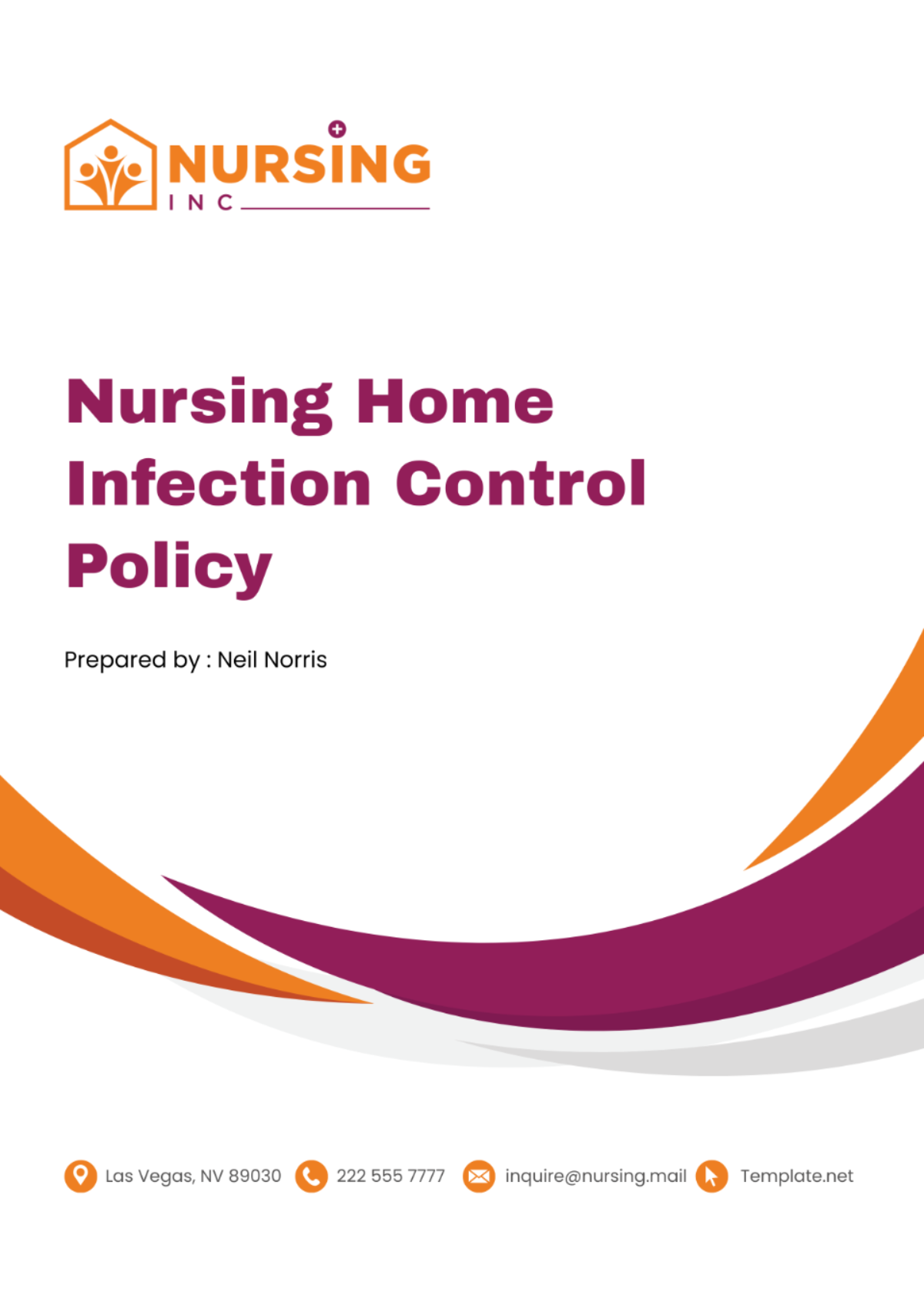
A. Introduction and Purpose
At [Your Company Name], we prioritize the well-being and safety of our residents and staff above all else. The Nursing Home Infection Control Policy serves as a cornerstone in our commitment to maintaining a healthy environment where everyone can thrive. We recognize that preventing the spread of infections is essential not only for promoting individual health but also for fostering a sense of security and trust within our community.
This policy outlines our proactive approach to infection control, emphasizing evidence-based practices, regulatory compliance, and continuous improvement. By adhering to these guidelines, we aim to mitigate the risk of infectious diseases, minimize the impact of outbreaks, and safeguard the health and dignity of all individuals under our care. Through collaboration, education, and diligent implementation, we strive to uphold the highest standards of infection prevention and control, ensuring that [Your Company Name] remains a place where residents can live with confidence and peace of mind.
B. Responsibilities and Roles
Effective implementation of the Nursing Home Infection Control Policy requires clear delineation of responsibilities among staff members and oversight by designated individuals. The following table outlines the roles and responsibilities of key personnel:
Role | Responsibilities |
|---|---|
Nurses | Implement infection control protocols |
Educate residents and staff on preventive measures | |
Caregivers | Adhere to hand hygiene and PPE guidelines |
Monitor residents for signs of infection | |
Administrators | Provide resources and support for infection control efforts |
Ensure compliance with regulatory requirements | |
Support Staff | Maintain cleanliness and hygiene in common areas |
Assist with the implementation of infection control measures | |
Infection Control Committee | Oversee adherence to the policy and effectiveness of control measures |
Review surveillance data and recommend improvements in infection control practices | |
Designated Infection Control Officer | Lead the implementation of the policy and related strategies |
Serve as a resource for staff regarding infection control measures and outbreak management |
C. Preventive Measures
At [Your Company Name], we prioritize proactive measures to prevent the spread of infections and safeguard the health of our residents and staff. Our comprehensive approach encompasses the following preventive measures:
Hand Hygiene Protocols
Handwashing: All staff members are required to wash their hands frequently using soap and water for at least 20 seconds, especially before and after resident care activities.
Hand Sanitization: Alcohol-based hand sanitizers are readily available throughout the facility and should be used when handwashing facilities are not accessible.
Education and Training: Regular training sessions are conducted to ensure that staff understand and adhere to proper hand hygiene techniques.
Personal Protective Equipment (PPE)
Use of PPE: Staff members are provided with appropriate PPE, including gloves, gowns, masks, and eye protection, as needed, to prevent exposure to infectious agents.
Donning and Doffing Procedures: Training is provided on the correct procedures for donning and doffing PPE to minimize the risk of contamination.
Cleaning and Disinfection Procedures
Routine Cleaning: High-touch surfaces and common areas are cleaned and disinfected regularly using EPA-approved disinfectants.
Terminal Cleaning: In cases of known or suspected infectious outbreaks, thorough terminal cleaning and disinfection protocols are implemented to eliminate pathogens.
Isolation Precautions
Standard Precautions: All staff members are instructed to adhere to standard precautions, including the use of PPE, when caring for residents.
Transmission-Based Precautions: Additional precautions, such as contact, droplet, or airborne precautions, are implemented based on the suspected or confirmed mode of transmission of specific pathogens.
Vaccination Policies
Staff Vaccination: All staff members are strongly encouraged to receive annual vaccinations for influenza and other vaccine-preventable diseases.
Resident Vaccination: Residents are offered vaccinations according to CDC recommendations to protect against vaccine-preventable illnesses.
Environmental Hygiene
Air Quality Control: HVAC systems are maintained to ensure proper ventilation and air filtration within the facility.
Water Management: Regular monitoring and maintenance of water systems are conducted to prevent the growth and spread of waterborne pathogens.
D. Surveillance and Monitoring
Regular surveillance for infections is a cornerstone of our infection control efforts at [Your Company Name]. Our robust surveillance system allows for early detection of infections and enables us to track trends efficiently, facilitating timely interventions to prevent further spread. This section outlines the key components of our surveillance and monitoring protocols:
Methods of Data Collection
We employ various methods to collect data on infections, including regular screening of residents for signs and symptoms, laboratory testing, and monitoring of healthcare-associated infections (HAIs).
Surveillance data is collected systematically and consistently to ensure accuracy and reliability.
Reporting Mechanisms
Staff members are required to report any suspected or confirmed cases of infections promptly to the designated infection control officer or committee.
We have established clear channels of communication for reporting infections to relevant regulatory agencies as required by law.
Usage of Surveillance Data
Surveillance data is analyzed regularly to identify trends, patterns, and emerging threats.
Data-driven decisions are made regarding infection prevention and control strategies, resource allocation, and staff training initiatives.
Continuous monitoring of surveillance data allows us to assess the effectiveness of our interventions and make adjustments as needed to optimize outcomes.
E. Education and Training
At [Your Company Name], we recognize that ongoing education and training are essential components of effective infection control. Our commitment to staff development ensures that all team members have the knowledge and skills necessary to implement infection control practices confidently. This section highlights our approach to education and training:
Our Approach:
We have adopted dynamic and interactive training methodologies to engage staff members actively in learning about infection control practices. Training sessions are designed to cater to different learning styles and are conducted regularly to reinforce key concepts and address emerging issues.
Content:
Our education initiatives cover a wide range of topics, including:
Hand hygiene protocols
Proper use of personal protective equipment (PPE)
Cleaning and disinfection procedures
Recognition of infectious disease symptoms
Transmission-based precautions
Vaccination policies
Outbreak response protocols
Delivery:
Training sessions are delivered through various mediums, including:
In-person workshops and seminars
Online modules and webinars
Hands-on demonstrations and simulations
Printed materials and resources
Evaluation:
We assess the effectiveness of our education and training programs through:
Pre and post-training assessments to measure knowledge acquisition
Direct observation of staff practices during routine activities
Feedback from staff members regarding the usefulness and relevance of training sessions
Review of infection control compliance data and surveillance reports
Continuous Improvement:
We are committed to continuous improvement in our education and training initiatives. Feedback from staff members and ongoing evaluation of program effectiveness inform updates and enhancements to our training curriculum, ensuring that it remains relevant and impactful in promoting infection prevention and control practices throughout our facility.
F. Outbreak Response Plan
At [Your Nursing Home Name], we understand the critical importance of having a robust outbreak response plan in place to effectively manage and contain infectious disease outbreaks. Our plan is designed to provide clear guidance and procedures for identifying, responding to, and communicating about outbreaks within our facility.
Identification of Outbreaks
We have established criteria and protocols for identifying potential outbreaks, including increased rates of illness or unusual symptoms among residents or staff.
Surveillance data, including trends in infectious diseases and syndromic surveillance, is monitored closely to detect outbreaks early.
Containment Measures
Upon identification of an outbreak, immediate containment measures are implemented to prevent further spread of infection.
This may include isolating affected individuals, implementing transmission-based precautions, enhancing cleaning and disinfection protocols, and restricting visitor access as necessary.
Communication Plan
A well-detailed communication plan ensures that all relevant parties, including residents, families, staff members, and regulatory authorities, are promptly informed about the outbreak.
Clear and transparent communication helps to manage expectations, alleviate concerns, and facilitate cooperation in outbreak response efforts.
Coordination with Healthcare Partners
In the event of a severe outbreak or when additional resources are needed, we define clear channels of communication and coordination with healthcare partners, including local health departments, hospitals, and other healthcare facilities.
This may involve seeking assistance with outbreak investigation, laboratory testing, medical consultation, and provision of additional staff or supplies.
Documentation and Evaluation
Throughout the outbreak response process, thorough documentation of actions taken, communications made, and outcomes observed is maintained.
After the outbreak has been contained, a comprehensive evaluation is conducted to assess the effectiveness of the response and identify areas for improvement.
G. Quality Improvement and Evaluation
Quality improvement holds fundamental importance when it comes to preserving effective infection control practices. Conducting regular audits to evaluate compliance with infection control measures, carrying out structured assessments to identify any gaps, implementing feedback mechanisms to ensure that all healthcare personnel can contribute their observations and suggestions, and consistently reviewing surveillance data to monitor the effectiveness of control practices – all these systematic methods will guarantee the efficiency and efficacy of the infection control measures in place.In addition, the policy provides a methodical pathway to pinpoint areas that require improvement. By doing this, the institution can maintain a high standard of infection control by continuously identifying weaknesses and taking the required corrective actions to resolve them. This means that issues can be promptly and efficiently addressed as soon as they arise, rather than allowing them to potentially proliferate and undermine the institution's broader objectives for infection control.
Policy Effective Date: [Month, Day, Year]
- 100% Customizable, free editor
- Access 1 Million+ Templates, photo’s & graphics
- Download or share as a template
- Click and replace photos, graphics, text, backgrounds
- Resize, crop, AI write & more
- Access advanced editor
Mitigate health risks with the Nursing Home Infection Control Policy Template from Template.net. This editable and customizable template outlines effective strategies and procedures for preventing and managing infections, promoting a healthy environment. Editable in our Ai Editor Tool, it's crucial for maintaining high standards of hygiene, protecting residents and staff, and ensuring compliance with health regulations in your nursing home.
You may also like
- HR Policy
- Restaurant Policy
- Company Policy
- Accounting Policies and Procedures
- Website Policy
- Privacy Policy
- Safety Policy
- School Policy
- IT and Software Policy
- Law Firm Policy
- Construction Policy
- Interior Design Policy
- Travel Agency Policy
- Education Academic Policy
- Security Policy
- Real Estate Policy
- Expense Policy
- Software Policy
